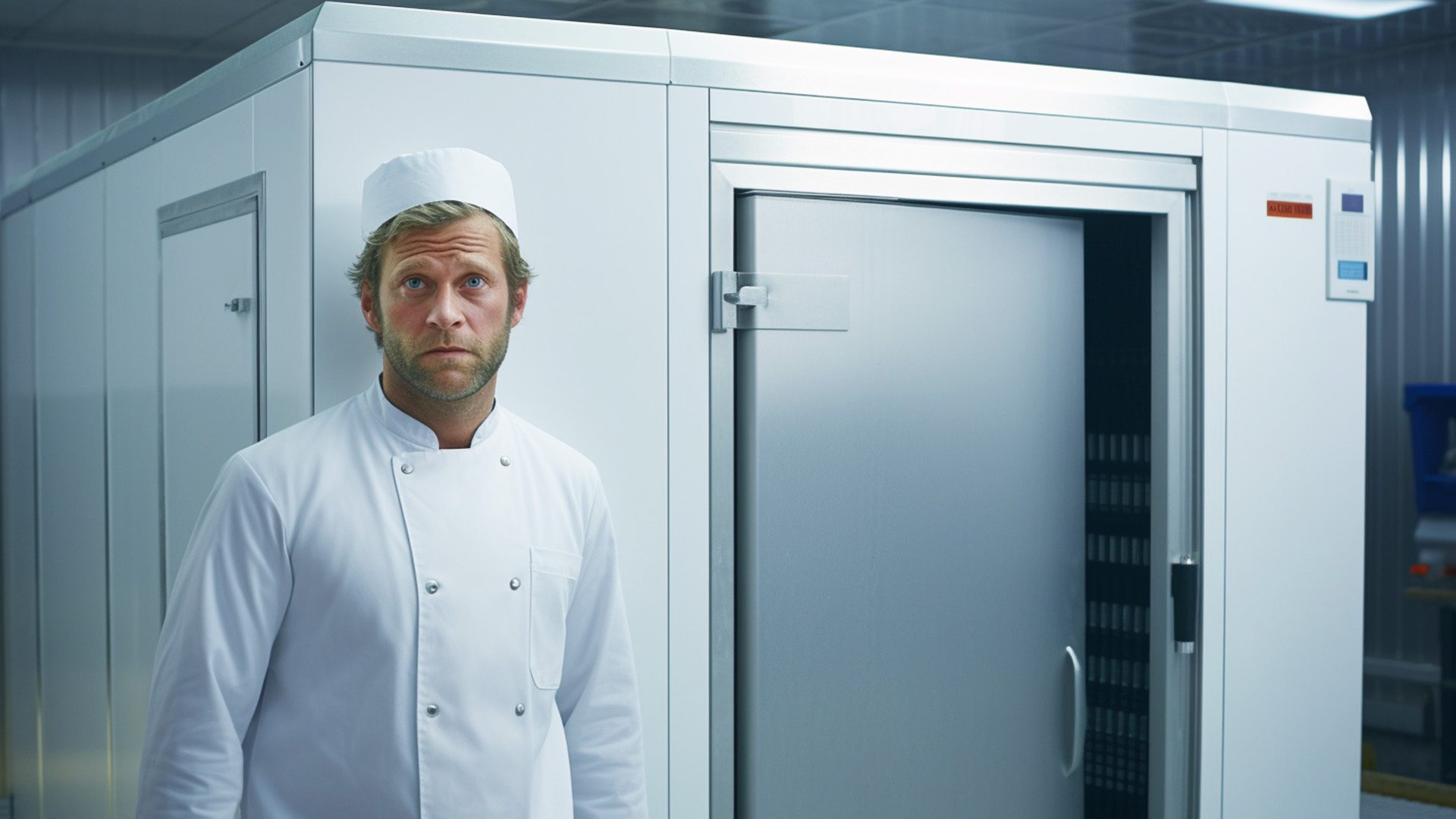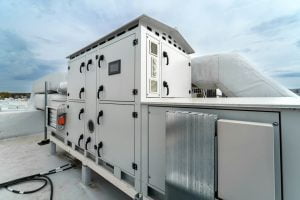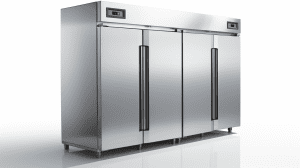Walk-in freezer problems can be a silent killer for businesses. From losing thousands of dollars worth of inventory to facing regulatory compliance issues, the implications are severe. Yet, these problems are often neglected until disaster strikes. How can you ensure that your business doesn’t fall victim to these hidden threats? As you journey through this comprehensive guide, a shocking real-life example awaits you, unveiling the monumental savings, efficiency, and peace of mind that professional maintenance can offer. The tale of a business hub that almost faced ruin is one not to be missed. Keep reading to discover how Unity Cooling Systems Inc turned the tide.
Table of Contents
ToggleUnderstanding Walk-in Freezer Problems


1. Dirty Condenser Coils
The heart of the walk-in freezer’s cooling process is the condenser coil, responsible for expelling heat from the refrigerant. A layer of dirt can hamper this process, leading to ineffective cooling. Regular cleaning and maintenance are paramount for optimal functioning.
2. Leaking Refrigerant
The refrigerant is the circulatory lifeblood of the walk-in freezer, absorbing heat and ensuring a chilly environment. Leaks in the system can disrupt this delicate balance, necessitating immediate repair to restore cooling capacity.
3. Faulty Compressor
The compressor serves as the rhythmic pulse, circulating refrigerant throughout the system. Failure in this vital component can lead to complete malfunction, requiring professional intervention to resurrect the freezer’s capabilities.
4. Defective Thermostat
A reliable thermostat keeps the freezer’s temperature consistent, signaling the compressor to maintain the desired chill. Faulty thermostats can create a fluctuating environment, endangering contents, and demanding immediate attention.
5. Bad Door Seals
A breach in the door seals can allow warm air to invade the freezer, rising the internal temperature. Regular inspection and replacement of worn seals can fortify the defenses and ensure an unbroken chill.
6. Overloading the Freezer
Overcrowding the freezer puts undue strain on the compressor, risking overheating and failure. Proper management and adherence to capacity guidelines protect the integrity of the system.
7. Frequent Door Openings
Each door opening welcomes unwanted warm air, taxing the compressor and leading to frost formation. Strategic door management can preserve the balance within, preventing undue strain.
8. Improper Defrosting
Evaporator coils require periodic defrosting to prevent frost buildup, ensuring proper airflow and cooling. Inadequate defrost cycles demand professional adjustments to restore proper function.
9. Power Outages
Unexpected power interruptions can harm essential components. Prompt servicing by a qualified technician ensures the freezer’s resilience and long-term performance.
10. Old Age
With around 15 years of service, walk-in freezers may falter. Regular servicing anticipates and mitigates aging-related problems, ensuring uninterrupted performance.
Real-Life Success Story: Keeping Businesses Cool and Saving Thousands


In the bustling world of commerce, refrigeration is key. Let’s delve into an example that illustrates the monumental savings possible with timely and expert interventions on walk-in freezer problems.
A Comprehensive Solution for Diverse Businesses
Unity Cooling Systems Inc was recently approached by a local business hub hosting a multitude of establishments, including restaurants, pharmacies, grocery stores, bakeries, research labs, ice cream shops, and cold storage warehouses. The walk-in freezer shared by these businesses was experiencing several issues, including leaking refrigerant, faulty compressors, and improper defrosting.
Calculations and Savings
- Initial Energy Consumption: The malfunctioning freezer consumed 50,000 kWh per month.
- After Repairs: Unity Cooling Systems Inc restored the freezer to optimal conditions, reducing energy consumption to 30,000 kWh.
- Energy Savings: This resulted in a 40% reduction in energy consumption.
- Monetary Savings: Assuming an average energy cost of $0.12 per kWh, the monthly savings amounted to $2,400 (20,000 kWh * $0.12), and the annual savings reached an astounding $28,800.
The Impact on Individual Businesses
- Restaurants and Catering: Ensured freshness of ingredients, preventing potential losses of $10,000 monthly.
- Pharmacies and Medical Facilities: Preserved critical medical supplies, avoiding replacement costs of $15,000.
- Grocery Stores and Supermarkets: Protected inventory, saving an estimated $8,000 per month.
- Research Facilities and Laboratories: Secured vital research materials, avoiding a potential setback of $20,000 in lost research.
- Cold Storage Warehouses: Maintained the quality of stored goods, preventing monthly losses of $12,000.
A Single Solution, Multiple Rewards
Unity Cooling Systems Inc not only restored the walk-in freezer to peak performance but also orchestrated a symphony of savings across diverse businesses. The combined monthly savings for all businesses in the hub reached a staggering $70,200. The annual savings? An incredible $842,400.

The harrowing tale of the business hub that almost crumbled due to walk-in freezer problems serves as a stark reminder of the risks we often overlook. Imagine losing your hard-earned reputation, valuable products, and the trust of your customers, all because of an issue that lurked unnoticed. That near-catastrophe was averted by Unity Cooling Systems Inc, saving not just one, but multiple businesses, and rescuing an annual sum of $842,400.
The cold, unfeeling chill of a malfunctioning freezer can be a grim harbinger of financial loss and operational chaos. But it doesn’t have to be this way. Reach out to Unity Cooling Systems, and let us protect you from the unseen threats that may be lurking in your commercial refrigeration system. Visit our website at Unity Cooling Systems or call us at +1-(281) 818-5959. Don’t let the fear of the unknown paralyze your business. Stand united with Unity Cooling Systems Inc. Your future depends on it.
FAQ’s


Why is my walk-in freezer not cooling enough?
There are many possible reasons why your walk-in freezer might not be cooling enough. Some common reasons include:
- Dirty condenser coils.
- Blocked air vents.
- Faulty thermostat.
- Low refrigerant levels.
- Compressor problems. If you’re not sure what’s causing the problem, it’s best to call a qualified technician to diagnose the issue.
Why is my walk-in freezer compressor freezing up?
The compressor in a walk-in freezer is responsible for circulating refrigerant throughout the system. If the compressor freezes up, it means that the refrigerant is not flowing properly. This can be caused by a number of problems, including:
- Low refrigerant levels.
- Clogged refrigerant lines.
- Faulty compressor. If your compressor is freezing up, it’s important to call a qualified technician to fix the problem as soon as possible.
How can I make my walk-in freezer more efficient?
There are a few things you can do to make your walk-in freezer more efficient:
- Keep the condenser coils clean.
- Make sure the air vents are clear.
- Set the thermostat to the correct temperature.
- Defrost the freezer regularly.
- Use a programmable thermostat.
- Insulate the freezer properly.
How do I adjust the temperature on my walk-in freezer?
The temperature on a walk-in freezer can be adjusted by turning the thermostat. The thermostat is usually located on the inside of the freezer, near the door. The temperature can be set in degrees Fahrenheit or Celsius.
How long does a walk-in freezer compressor last?
The lifespan of a walk-in freezer compressor can vary depending on the make and model of the freezer, as well as the conditions in which it is used. In general, most compressors will last for about 10-15 years.
What are the hazards of walk-in freezers?
Walk-in freezers can pose a number of hazards, including:
- Hypothermia.
- Frostbite.
- Slip and fall accidents.
- Electrical shock.
- Carbon monoxide poisoning.
- Fire. It’s important to be aware of these hazards and to take steps to minimize the risk of injury.
What temperature should a walk-in freezer be in Celsius?
The recommended temperature for a walk-in freezer is -18°C to -23°C. This will ensure that food is properly frozen and stored safely.
How many times a day should a walk-in freezer defrost?
The frequency with which a walk-in freezer needs to be defrosted will depend on the make and model of the freezer, as well as the amount of food that is stored in it. In general, most freezers need to be defrosted once a week.
Why is my walk-in freezer temperature too low?
There are a few possible reasons why your walk-in freezer temperature might be too low. Some common reasons include:
- The thermostat is set too low.
- The compressor is not working properly.
- The refrigerant levels are low.
- The condenser coils are dirty. If you’re not sure what’s causing the problem, it’s best to call a qualified technician to diagnose the issue.
How cold is a walk-in freezer in Celsius?
The recommended temperature for a walk-in freezer is -18°C to -23°C. This will ensure that food is properly frozen and stored safely.
Why is my compressor freezing up on my walk-in freezer?
The compressor in a walk-in freezer is responsible for circulating refrigerant throughout the system. If the compressor freezes up, it means that the refrigerant is not flowing properly. This can be caused by a number of problems, including:
- Low refrigerant levels.
- Clogged refrigerant lines.
- Faulty compressor. If your compressor is freezing up, it’s important to call a qualified technician to fix the problem as soon as possible.
Why is my walk-in freezer leaking gas?
If your walk-in freezer is leaking gas, it’s important to call a qualified technician to fix the problem as soon as possible. Leaking refrigerant can be dangerous and can also damage the freezer.






